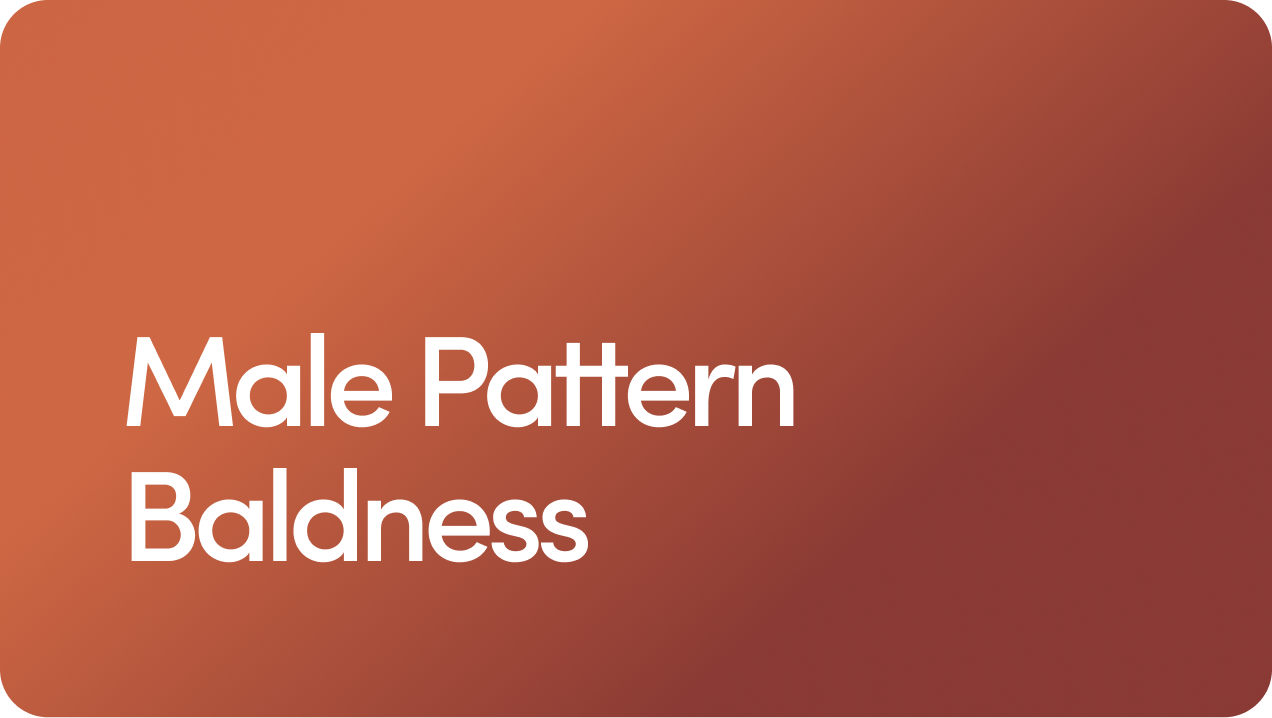Club Hair: What Is It and What Does It Mean?
“Club hair” might sound like a type of hairstyle you put on before heading to a rave, but it’s actually the technical name for a natural part of your hair growth cycle.
Overview
“Club hair” might sound like a type of hairstyle you put on before heading to a rave, but it’s actually the technical name for a natural part of your hair growth cycle.
When you run your fingers through your hair and pull a few strands away, you’re typically holding club hairs. If you look closely, you might see a tiny bulb on the base of those hairs.
These hair strands, which have stopped growing and feature a keratinized bulb at their base, are common and usually nothing to worry about. They’re just fully formed hairs that have stopped growing. You have some on your head as you read this.
However, in some cases, an excessive amount of club hairs at one time could indicate an underlying condition or symptom worth investigating.
Keep reading to learn more about what causes club hairs, when they’re normal, and hair loss treatments that might help with shedding.
Symptoms
Typically, each strand of club hair has a tiny, bulb-shaped structure at the end closest to the scalp. Due to less melanin around this bulb, it may be light-colored or translucent, although sometimes you may find a black bulb at the end of hair strands.
Unlike broken hairs, club hairs are smooth along the hair shaft and longer in length.
Here are some of the things to pay attention to if you notice changes in your hair growth pattern or overall hair appearance that might indicate club hair:
Hair shedding. It’s normal to lose around 50 to 100 hairs per day. If you’re suddenly losing more hair than normal, it’s possible you have more club hairs present.
Thinning hair. Excessive club hairs may contribute to noticeable thinning areas on your head if many hairs remain in the telogen (or resting) phase.
Visible bulb. Club hairs have a bulb at the end that may appear black, clear, or pale when your hair falls out.
Hair length. Compared to shorter, broken strands of hair (sometimes caused by brushing too aggressively), club hairs are usually longer and fully formed. Take note of what your shedded hairs look like and whether they appear to be fully formed hairs or pieces caused by breakage.
Causes
Club hairs are a part of the naturalhair growth cycle, but finding many can be a sign of a problem. Club hairs have a number of causes, including underlying health conditions and various stressors that affect your hair.
Male Pattern Baldness
Genetically linked pattern hair loss (also called male pattern baldness or androgenetic alopecia) is the most common type of hair loss in males. It generally starts as receding around your temples and then balding at the crown of your scalp.
People with this type of hair loss will likely have an increase in the number of club hairs in areas of the scalp associated with genetic hair loss.
Telogen Effluvium
Some club hairs are normal. But if you have more than usual, it may be due to telogen effluvium, which causes more hair strands than usual to enter the telogen (resting) phase and fall out instead of returning to the anagen (growing) phase of the hair cycle.
Telogen effluvium is generally a short-term and temporary hair loss. Unlike pattern hair loss, this condition generally causes excessive shedding throughout your scalp instead of in a pattern associated with male pattern baldness.
Common triggers of telogen effluvium and an abnormal amount of club hairs can include:
Significant stress or anxiety
Physical trauma
Surgery
Severe illness or infections
Hormonal changes (such as after childbirth or during perimenopause)
Nutritional deficiencies like iron deficiency or imbalances
Thyroid conditions, such as hypothyroidism (underactive thyroid) or hyperthyroidism (overactive thyroid)
Certain medications
Nutritional Deficiencies
Like the other tissues in your body, your hair needs certain essential nutrients to thrive.
Certain mineral and vitamin deficiencies, like iron, zinc, biotin, or vitamin D, can potentially affect hair growth. You also need enough protein to build the keratin fibers that make up the structure of your hair.
In fact, your hair and nails are often the first places you’ll notice signs of deficiencies because your body largely sees these tissues as “non-essential” and reallocates resources to tissues needed for survival.
Hormonal Imbalances
Your hormones play a big role in hair growth. Hormonal changes, such as dips in thyroid hormone, can cause hair thinning.Learn more about thyroid hair loss.
Medications
Some medications may also cause hair loss as a side effect, including:
Anticoagulants to prevent blood clotting
Blood thinners
Antidepressants
Beta-blockers for high blood pressure
Chemotherapy
Some acne medications
If you've started a new medication and notice increased shedding, it's worth discussing with your doctor.
Learn more about medications that can cause hair loss.
When Club Hairs Are Natural
Club hairs form during the transition from the growth (anagen) phase to the resting (telogen) phase of the hair growth cycle.
It helps to have an understanding of these four stages:
Anagen Phase | The Growth Phase
The anagen phase of hair growth is the stage where it actively grows and gets longer. At any given time, about 90 percent of the hair on your head is in this phase.
Catagen Phase | The Transition Phase
You can think of the catagen phase as the brief, two-to-three-week interlude between growth and rest. During this short period, your hair follicles shrink, and the hair detaches from its blood supply.
Telogen Phase | The Resting Phase
The telogen, or resting phase, typically lasts three to five months. Here, the hair is no longer growing, but it's still attached to the follicle. During this phase, club hairs begin to form, and beneath each club hair, a new hair begins to form.
Exogen Phase | The Shedding Phase
Finally, the last phase of hair growth is the exogen phase. This is the phase where your hair actively sheds to make way for the new hair underneath.
Following the telogen phase, your hair falls out, and the cycle starts over. The club hair temporarily holds the hair follicle in your head after it stops growing for around 100 days.
Risk Factors
Club hair can develop on anybody’s head, but there are a few things that may increase your likelihood:
Aging. As we get older, it’s natural for hair growth to slow down and for the ratio of the hairs in the anagen phase versus the telogen phase to shift. This makes club hairs more common in older adults.
Genetics. A family history of hair loss or scalp conditions can increase the likelihood of experiencing disrupted hair growth cycles and excessive club hairs.
Stress. Both physical and emotional stress can disrupt the hair growth cycle, causing a larger number of hairs to enter the telogen phase. Stress from major life events, illnesses, or even ongoing anxiety can act as triggers, causing more club hairs to shed. A 2023 study found individuals under stress werethree times more likely to experience hair loss than those who weren’t stressed during the study period.
Nutritional imbalances. When your diet lacks a variety of healthy foods, it can result in low levels of certain nutrients that ultimately affect hair growth. For example, low levels of zinc, iron, biotin, and protein may weaken hair follicles.
Hormonal changes. Hormones fluctuate during seasons of life, like pregnancy, the postpartum period, and perimenopause. Hormones also change with thyroid disorders and may eventually influence hair follicle activity. Such shifts can either accelerate or disrupt the hair growth cycle, leading to more hairs entering the telogen phase too soon.
Chronic health conditions. Autoimmune diseases, infections, or prolonged high fevers can shock hair follicles, triggering more club hairs. For example, studies show that COVID-19 is associated with temporary hair loss in some people, due to telogen effluvium.
Medications.Taking medications linked to hair loss, such as chemotherapy drugs and blood thinners, may put you at risk of developing club hairs and hair loss.
Diagnosis
You might see club hairs on your own, or you might be diagnosed after an examination with your healthcare provider—or perhaps both.
If you want to start by trying to self-diagnose club hair follicles, an easy way is to look for a bulb located at the base of long hair strands that have naturally fallen out. If you’re experiencing excessive shedding of fully formed hairs or notice areas of thinning, this may also be indicative of club hair.
If you’re still not sure or want to investigate further, it’s a good idea to speak with a professional who can offer medical advice. For instance, a dermatologist can perform a simple hair pull test to evaluate what’s shedding, in which they grab small sections of hair, gently tug, and evaluate how many hairs come out.
They may also perform a scalp exam to rule out other underlying conditions that could be promoting club hairs, like fungal infections or alopecia. And if they still need more information, they might recommend a blood test to check for hormonal imbalances or nutritional deficiencies.
Treatment | Hair Loss Treatments
If club hair is getting you down, you’re probably wondering about treatment options. Treating the root cause of excessive club hairs, like ongoing stress or illness, often resolves the issue. In the meantime, there are also medications and hair care habits that can help.
Medications
Many medications are designed to support healthy hair growth. Two in particular are commonly recommended for telogen effluvium and may be helpful for addressing excessive club hairs.
Minoxidil
Minoxidil is a topical and oral medication that is FDA-approved for treating androgenetic alopecia (male pattern baldness). Oral minoxidil is more effective for treating telogen effluvium.
Some studies show that people who use minoxidil can see up to a 20 percent increase in hair growth over 48 weeks. However, it’s important to note that this medication isn’t for everyone, as some people experience increased blood pressure.
Depending on your preferences and the cause of your hair shedding, you may consider topical, over-the-counter options like minoxidil solution or minoxidil foam.
Finasteride
If you’re experiencing male pattern baldness on top of telogen effluvium, consider speaking with your healthcare provider about oral finasteride, another FDA-approved treatment for male hair loss.
Finasteride prevents the conversion of testosterone to dihydrotestosterone (DHT). This hormone can cause hair follicles to miniaturize or shrink, promoting male pattern hair loss.
You can also get finasteride in topical forms, such as finasteride spray. While this form isn’t FDA-approved for androgenetic alopecia, many healthcare professionals prescribe it off-label for this purpose.
Hair Care Products and Practices
The quality of the hair care products and the daily routine you use with your hair make a difference. Here are some things you can do to help minimize further stress and damage to your hair, help address telogen effluvium, and rein in excessive club hairs.
Avoid tight hairstyles. Pulling longer hair tightly into styles like ponytails or braids can trigger traction alopecia and worsen hair loss and thinning.
Practice gentle hair care. Avoid harsh hair care products, high-heat styling, and brushing your hair too roughly, as this can worsen hair damage and shedding.
Prioritize your scalp and hair health. Scalp care is an important factor in overall hair health. If you have dandruff, use a dandruff detox shampoo to keep your scalp clean and comfortable. Giving yourself scalp massages can also help, as they can stimulate hair follicles.
Try products to increase hair volume. If club hair is creating noticeable thin areas, tryour thickening shampoo with saw palmetto. Our volumizing shampoo and conditioner can also improve the appearance of limp, thin hair.
Hydrate. Damaged, dry strands can worsen the appearance of your overall hair. Consider including some moisturizing hair products in your routine.
Balanced Nutrition
You can think of your diet as the foundation for strong hair. It might not prevent genetic hair loss, but it may help you minimize hair loss caused by malnutrition.
Some foods you can focus on include:
Iron
Zinc
Biotin
Vitamin D
Learn more about nutrition for hair loss.
Supplements
You may find it difficult to get all the essential nutrients your hair needs through your diet alone. Supplements can offer an effective way to make sure you’re getting enough of all your essential nutrients.
They’re called “supplements” because they’re supposed to supplement a healthy overall diet. If you do decide to take them, you should still improve your overall nutrition for the best results, too.
Hair Transplant
A hair transplant is a potential option for some men with pattern baldness.
It involves taking hair from one part of your scalp and implanting these follicles somewhere else. While it can often give your hair a fuller appearance, it may not be for everybody. For instance, men in the advanced stages of baldness might not have enough donor hair to offer effective coverage.
Learn more about hair transplantation.
Prevention
Hair changes aren’t always preventable, but there are things you can do to help prevent club hair from worsening in the future.
In addition to the treatment tips above, it’s important to practice lifestyle habits that help reduce your overall stress and maintain the healthy hair you already have, such as the following:
Practice healthy stress management. Severe stress can trigger telogen effluvium. We all face stressors, but how you cope with them can make a big difference. Consider deep breathing techniques, listening to calming music, going for a walk, spending some time in nature, venting to trusted buddies, journaling, and taking regular breaks from stressful work. Learn more about stress-related hair loss.
Optimize your diet. Nutrition plays a central role in every aspect of your wellness, including hair health. Prioritize nutrient-dense foods, including fruits, vegetables, whole grains, nuts, seeds, legumes, and lean proteins. Limit ultra-processed foods, sugar-sweetened beverages, and alcohol, which aren’t as nutritionally dense.
Quit smoking. Smoking has been linked to a higher risk of several negative health effects, and it may even promote hair loss. If you need help quitting, reach out to your healthcare provider or call the national smoking quitline at 1-800-QUIT-NOW.
Club Hairs: Key Takeaways
Club hair is a normal, natural part of your hair's life cycle. Seeing a few hairs with those characteristic white bulbs shouldn’t be a cause for alarm.
If you notice a significant increase in the amount of club hairs on your scalp, especially accompanied by areas of thin hair that didn’t seem to be there before, consider talking to a hair care specialist. They can help diagnose the cause of your hair loss and advise you on the best way to stimulate regrowth.
FAQS
What is club hair?
Club hair refers to a hair strand that has stopped growing and is in the telogen phase of the hair growth cycle. Club hairs are a natural part of hair growth, but finding many of them can be a sign of hair thinning.
How can I tell if I have club hairs?
It’s possible to identify club hairs with the naked eye, but it’s often easier with a microscope. This is what a hair care specialist examining your scalp for hair loss will likely use.
Is it normal to lose club hairs every day?
Yes. It’s completely normal to shed 50 to 100 club hairs per day. This natural shedding allows new hairs to grow. However, if you notice excessive shedding, thinning patches, or a receding hairline, it may indicate a hair or scalp condition that needs attention.
What causes more club hairs to form?
Factors such as stress, hormonal changes, diet choices, illness, or harsh hair treatments can push more hairs into the telogen (resting) phase prematurely, increasing the number of club hairs that shed. This condition is known as telogen effluvium.
19 Sources
- Alanazi AS, et al. (2023). Stress-related hair loss among the general population in Al Majma'ah, Saudi Arabia: A cross-sectional study. https://pmc.ncbi.nlm.nih.gov/articles/PMC10625171/
- Alhanshali L, et al. (2023). Medication-induced hair loss: An update. https://pubmed.ncbi.nlm.nih.gov/37591561/
- Almohanna F, et al. (2020). The role of vitamins and minerals in hair loss: A review. https://pmc.ncbi.nlm.nih.gov/articles/PMC6380979/
- American Academy of Dermatology Association. (n.d.). Do you have hair loss or hair shedding? https://www.aad.org/public/diseases/hair-loss/insider/shedding
- Asghar F, et al. (2020). Telogen effluvium: A review of the literature. https://pmc.ncbi.nlm.nih.gov/articles/PMC7320655/
- Awad NEHA, et al. (2024). Hair disorders associated with post-COVID-19 infection in females: A cross-sectional study. https://pubmed.ncbi.nlm.nih.gov/37704885/
- Babadjouni A, et al. (2021). The effects of smoking on hair health: A systematic review. https://pubmed.ncbi.nlm.nih.gov/34307472/
- Fernandez-Flores, et al. (2019). Histopathology of aging of the hair follicle. https://onlinelibrary.wiley.com/doi/10.1111/cup.13467
- Guo EL, et al. (2017). Diet and hair loss: Effects of nutrient deficiency and supplement use. https://pmc.ncbi.nlm.nih.gov/articles/PMC5315033/
- Hoover E, et al. (2023). Physiology, hair. https://www.ncbi.nlm.nih.gov/books/NBK499948/
- Hughes EC, et al. (2024). Telogen effluvium. https://www.ncbi.nlm.nih.gov/books/NBK430848/
- Hussein RS, et al. (2023). Impact of thyroid dysfunction on hair disorders. https://pubmed.ncbi.nlm.nih.gov/37692605/
- Li X, et al. (2022). Hair shedding evaluation for alopecia: A refined wash test. https://pmc.ncbi.nlm.nih.gov/articles/PMC8801509/
- Martel JL, et al. (2024). Anatomy, hair follicle. https://www.ncbi.nlm.nih.gov/books/NBK470321/
- Murphrey MB, et al. (2023). Anatomy, hair. https://www.ncbi.nlm.nih.gov/books/NBK513312/
- O'Connor K, et al. (2021). Nutrition and hair. https://pubmed.ncbi.nlm.nih.gov/34785008/
- Saleh D, et al. (2024). Anagen effluvium. https://www.ncbi.nlm.nih.gov/books/NBK482293/
- Suchonwanit P, et al. (2019). Minoxidil and its use in hair disorders: A review. https://pmc.ncbi.nlm.nih.gov/articles/PMC6691938/
- Tran PT, et al. (2022). Characteristics of patients with hair loss after isotretinoin treatment: A retrospective review study. https://pmc.ncbi.nlm.nih.gov/articles/PMC9447463/
Editorial Standards
Hims & Hers has strict sourcing guidelines to ensure our content is accurate and current. We rely on peer-reviewed studies, academic research institutions, and medical associations. We strive to use primary sources and refrain from using tertiary references. See a mistake? Let us know at [email protected]!
Related Conditions
 Hair Loss
Hair Loss
 Male Pattern Baldness
Male Pattern Baldness
 Dandruff
Dandruff
 Scarring Alopecia
Scarring Alopecia
 Seborrheic Dermatitis
Seborrheic Dermatitis
*All images feature a model portrayal
(unless otherwise noted).
